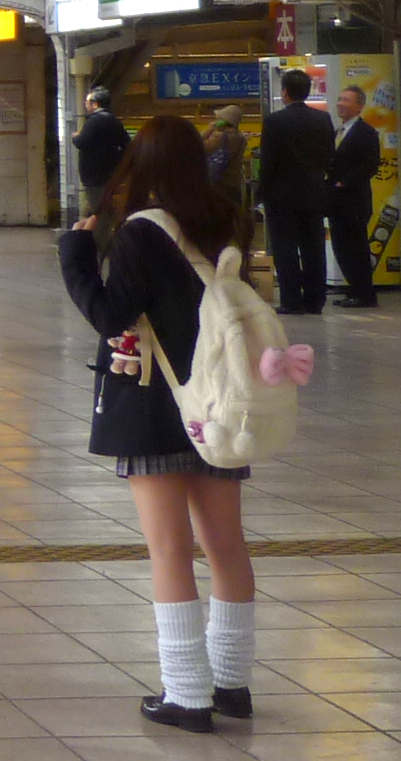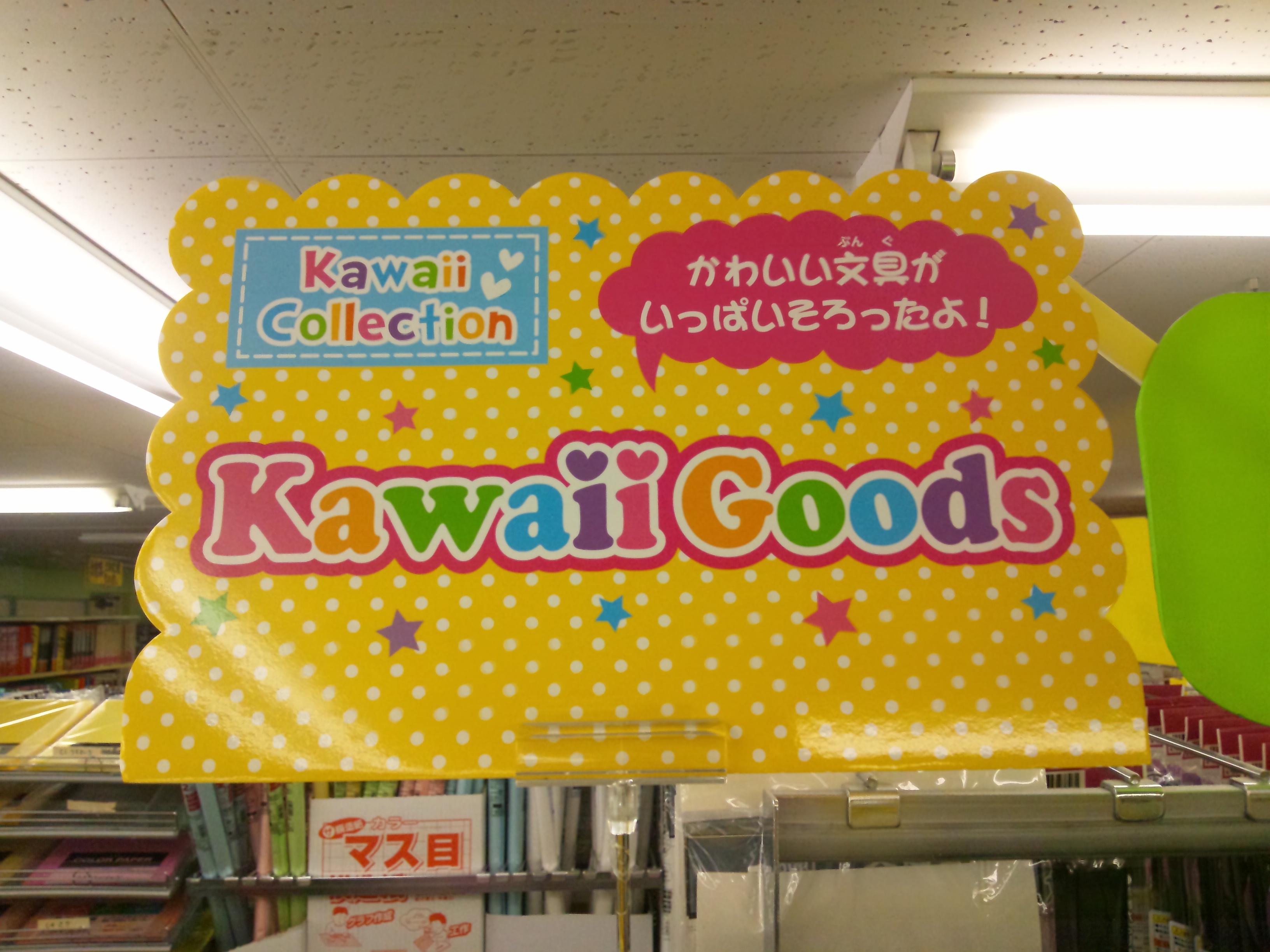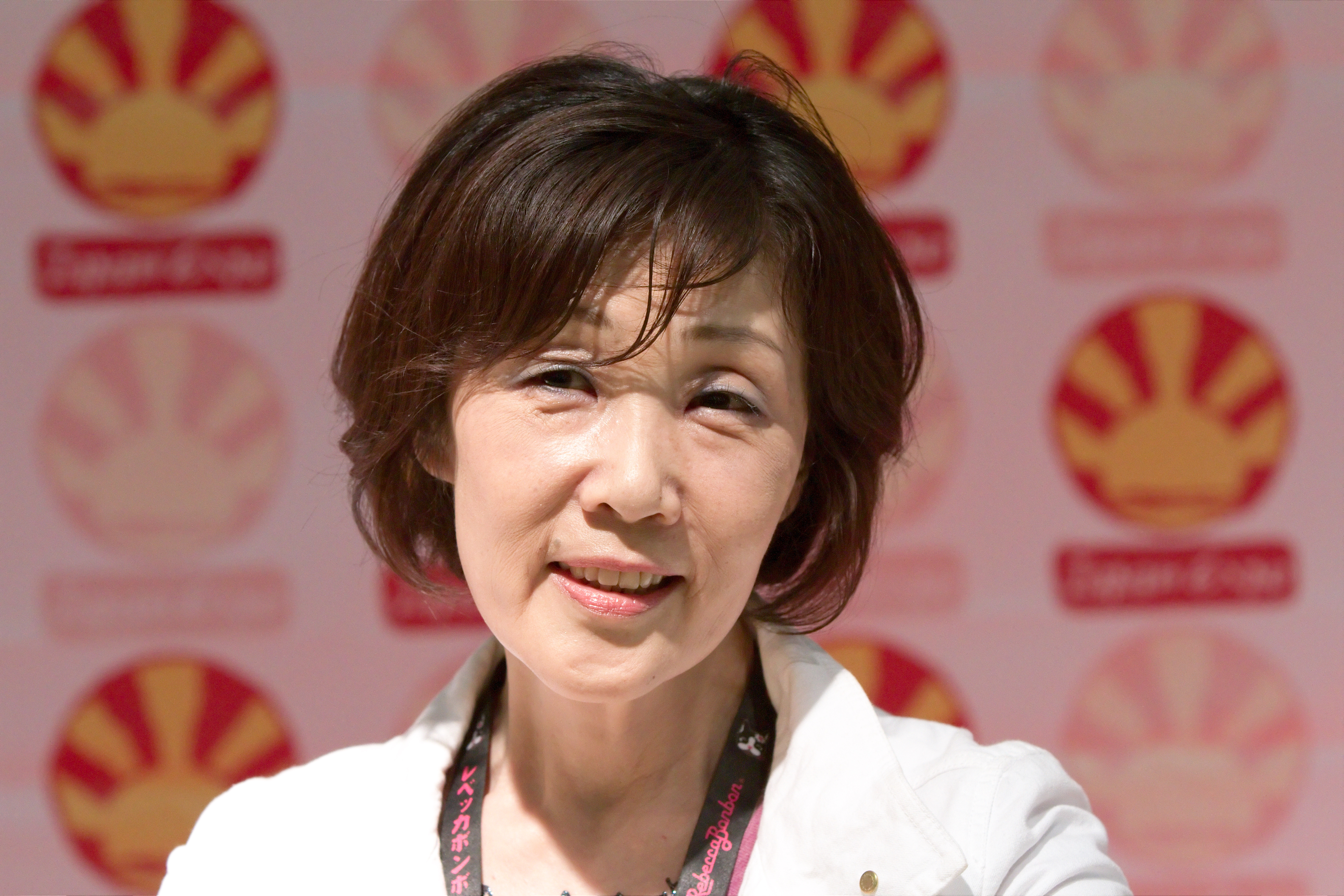|
Kawaii
''Kawaii'' is the culture of cuteness in Japan. It can refer to items, humans and non-humans that are charming, vulnerable, shy and childlike.Kerr, Hui-Ying (23 November 2016)"What is kawaii ŌĆō and why did the world fall for the ŌĆścult of cuteŌĆÖ?", ''The Conversation''. Examples include cute handwriting, certain genres of manga, anime, and characters including Hello Kitty and Pikachu. The cuteness culture, or ''kawaii'' aesthetic, has become a prominent aspect of Japanese popular culture, entertainment, clothing, food, toys, personal appearance, and mannerisms. Etymology The word ''kawaii'' originally derives from the phrase ''kao hayushi'', which literally means "(one's) face (is) aglow," commonly used to refer to flushing or blushing of the face. The second morpheme is cognate with ''-bayu'' in '' mabayui'' (ń£®Ńüä, ńø«µśĀŃüä, or ńø«µśĀŃéåŃüä) "dazzling, glaring, blinding, too bright; dazzlingly beautiful" (''ma-'' is from ''me'' "eye") and ''-hayu'' in ''omohayui'' (ķØ ... [...More Info...] [...Related Items...] OR: [Wikipedia] [Google] [Baidu] |
Japanese Popular Culture
Japanese popular culture includes Japanese cinema, cuisine, television programs, anime, manga, video games, music, and doujinshi, all of which retain older artistic and literary traditions; many of their themes and styles of presentation can be traced to traditional art forms. Contemporary forms of popular culture, much like the traditional forms, are not only forms of entertainment but also factors that distinguish contemporary Japan from the rest of the modern world. There is a large industry of music, films, and the products of a huge comic book industry, among other forms of entertainment. Game centers, bowling alleys, and karaoke parlors are well-known hangout places for teens while older people may play '' shogi'' or '' go'' in specialized parlors. Since the end of the US occupation of Japan in 1952, Japanese popular culture has been deeply influenced by American media. However, rather than being dominated by American products, Japan localised these influences by appropriat ... [...More Info...] [...Related Items...] OR: [Wikipedia] [Google] [Baidu] |
Pikachu
is a fictional species in the ''Pok├®mon'' media franchise. Designed by Atsuko Nishida and Ken Sugimori, Pikachu first appeared in the 1996 Japanese video games ''Pok├®mon Red'' and ''Green'' created by Game Freak and Nintendo, which were released outside of Japan in 1998 as ''Pok├®mon Red'' and ''Blue''. Pikachu is a yellow, mouse-like creature with electrical abilities. It is a major character in the ''Pok├®mon'' franchise, serving as its mascot and as a major mascot for Nintendo. Pikachu is widely considered to be the most popular and well-known Pok├®mon species, largely due to its appearance in the ''Pok├®mon'' anime television series as the companion of protagonist Ash Ketchum. In most vocalized appearances Pikachu is voiced by Ikue ┼ītani, though it has been portrayed by other actors, notably Ryan Reynolds in the live-action animated film ''Pok├®mon Detective Pikachu''. Pikachu has been well received by critics, with particular praise given for its cuteness, and h ... [...More Info...] [...Related Items...] OR: [Wikipedia] [Google] [Baidu] |
Hello Kitty
, also known by her full name , is a fictional Character (arts), character created by Yuko Shimizu, currently designed by Yuko Yamaguchi, and owned by the Japanese company Sanrio. Sanrio depicts Hello Kitty as an Anthropomorphism, anthropomorphized white cat with a red bow and no visible mouth. According to her backstory, she lives in a London suburb with her family, and is close to her twin sister Mimmy, who is depicted with a yellow bow. Hello Kitty was created in 1974 and the first item, a vinyl coin purse, was introduced in 1975. Originally Hello Kitty was only marketed towards preadolescent, pre-teenage girls, but beginning in the 1990s, the brand found commercial success among teenage and adult consumers as well. Hello Kitty's popularity also grew with the emergence of ''kawaii'' (cute) culture. The brand went into decline in Japan after the 1990s, but continued to grow in the international market. By 2010 the character was worth a year and ''The New York Times'' called h ... [...More Info...] [...Related Items...] OR: [Wikipedia] [Google] [Baidu] |
Japanese Street Fashion
Japanese street fashion refers to a number of styles of contemporary modern clothing in Japan. Created from a mix of both local and foreign fashion brands, Japanese street fashions tend to have their own distinctive style, with some considered to be extreme and avant-garde, with similarities to the haute couture styles seen on European catwalks. History As early as the 1950s, there were a few brands specially catered to street fashion, such as Onitsuka Tiger (now known as the ASICS). In addition, the emergence of strong youth culture in the 1960s and 1970s that continues today (especially in Harajuku, a district in Shibuya, Tokyo) drives much of the development of new styles, looks, and fashion subcultures. The rise of consumerism, which played an important part in Japan's "national character" during its economic boom in the 1980s, continues to influence fashion purchases, even after this economic bubble burst in the 1990s. These factors result in the swift turnover and variabi ... [...More Info...] [...Related Items...] OR: [Wikipedia] [Google] [Baidu] |
Japanese Writing
The modern Japanese writing system uses a combination of logographic kanji, which are adopted Chinese characters, and syllabic kana. Kana itself consists of a pair of syllabaries: hiragana, used primarily for native or naturalised Japanese words and grammatical elements; and katakana, used primarily for foreign words and names, loanwords, onomatopoeia, scientific names, and sometimes for emphasis. Almost all written Japanese sentences contain a mixture of kanji and kana. Because of this mixture of scripts, in addition to a large inventory of kanji characters, the Japanese writing system is considered to be one of the most complicated currently in use. Several thousand kanji characters are in regular use, which mostly originate from traditional Chinese characters. Others made in Japan are referred to as ŌĆ£Japanese kanjiŌĆØ ( ja, ÕÆīĶŻĮµ╝óÕŁŚ, wasei kanji, label=none; also known as ŌĆ£countryŌĆÖs kanjiŌĆØ ja, ÕøĮÕŁŚ, kokuji, label=none). Each character has an intrinsic meaning ... [...More Info...] [...Related Items...] OR: [Wikipedia] [Google] [Baidu] |
Ateji
In modern Japanese, principally refers to kanji used to phonetically represent native or borrowed words with less regard to the underlying meaning of the characters. This is similar to in Old Japanese. Conversely, also refers to kanji used semantically without regard to the readings. For example, the word "sushi" is often written with its . Though the two characters have the readings and respectively, the character means "one's natural life span" and means "to administer", neither of which has anything to do with the food. as a means of representing loanwords has been largely superseded in modern Japanese by the use of (see also Transcription into Japanese), although many coined in earlier eras still linger on. Usage today are used conventionally for certain words, such as ('sushi'), though these words may be written in hiragana (especially for native words), or katakana (especially for borrowed words), with preference depending on the particular word, context, a ... [...More Info...] [...Related Items...] OR: [Wikipedia] [Google] [Baidu] |
Magazines
A magazine is a periodical publication, generally published on a regular schedule (often weekly or monthly), containing a variety of content. They are generally financed by advertising, purchase price, prepaid subscriptions, or by a combination of the three. Definition In the technical sense a '' journal'' has continuous pagination throughout a volume. Thus ''Business Week'', which starts each issue anew with page one, is a magazine, but the '' Journal of Business Communication'', which continues the same sequence of pagination throughout the coterminous year, is a journal. Some professional or trade publications are also peer-reviewed, for example the '' Journal of Accountancy''. Non-peer-reviewed academic or professional publications are generally ''professional magazines''. That a publication calls itself a ''journal'' does not make it a journal in the technical sense; ''The Wall Street Journal'' is actually a newspaper. Etymology The word "magazine" derives from Arabic , t ... [...More Info...] [...Related Items...] OR: [Wikipedia] [Google] [Baidu] |
Comics
a medium used to express ideas with images, often combined with text or other visual information. It typically the form of a sequence of panels of images. Textual devices such as speech balloons, captions, and onomatopoeia can indicate dialogue, narration, sound effects, or other information. There is no consensus amongst theorists and historians on a definition of comics; some emphasize the combination of images and text, some sequentiality or other image relations, and others historical aspects such as mass reproduction or the use of recurring characters. Cartooning and other forms of illustration are the most common image-making means in comics; '' fumetti'' is a form that uses photographic images. Common forms include comic strips, editorial and gag cartoons, and comic books. Since the late 20th century, bound volumes such as graphic novels, comic albums, and ' have become increasingly common, while online webcomics have proliferated in the 21st century. The histo ... [...More Info...] [...Related Items...] OR: [Wikipedia] [Google] [Baidu] |
Mechanical Pencil
A mechanical pencil, also clutch pencil, is a pencil with a replaceable and mechanically extendable solid pigment core called a "lead" . The lead, often made of graphite, is not bonded to the outer casing, and can be mechanically extended as its point is worn away as it is being used. Other names include: microtip pencil, automatic pencil, drafting pencil, technical pencil, click pencil (generally refers to a specific brand), pump pencil, leadholder, Pacer (Australian English, ca. the 1980s), propelling pencil (British and Australian English, often refers to higher-end mechanical pencils), pen pencil (Indian English), and lead pencil (Bangladeshi and American English). Mechanical pencils are used to provide lines of constant width, without need of sharpening, for tasks such as technical drawing as well as for clean looking writing. They are also used for fine-art drawing. Since they do not have to be sharpened, they are also popular with students. Mechanical pencils were first u ... [...More Info...] [...Related Items...] OR: [Wikipedia] [Google] [Baidu] |




.jpg)

.jpg)

